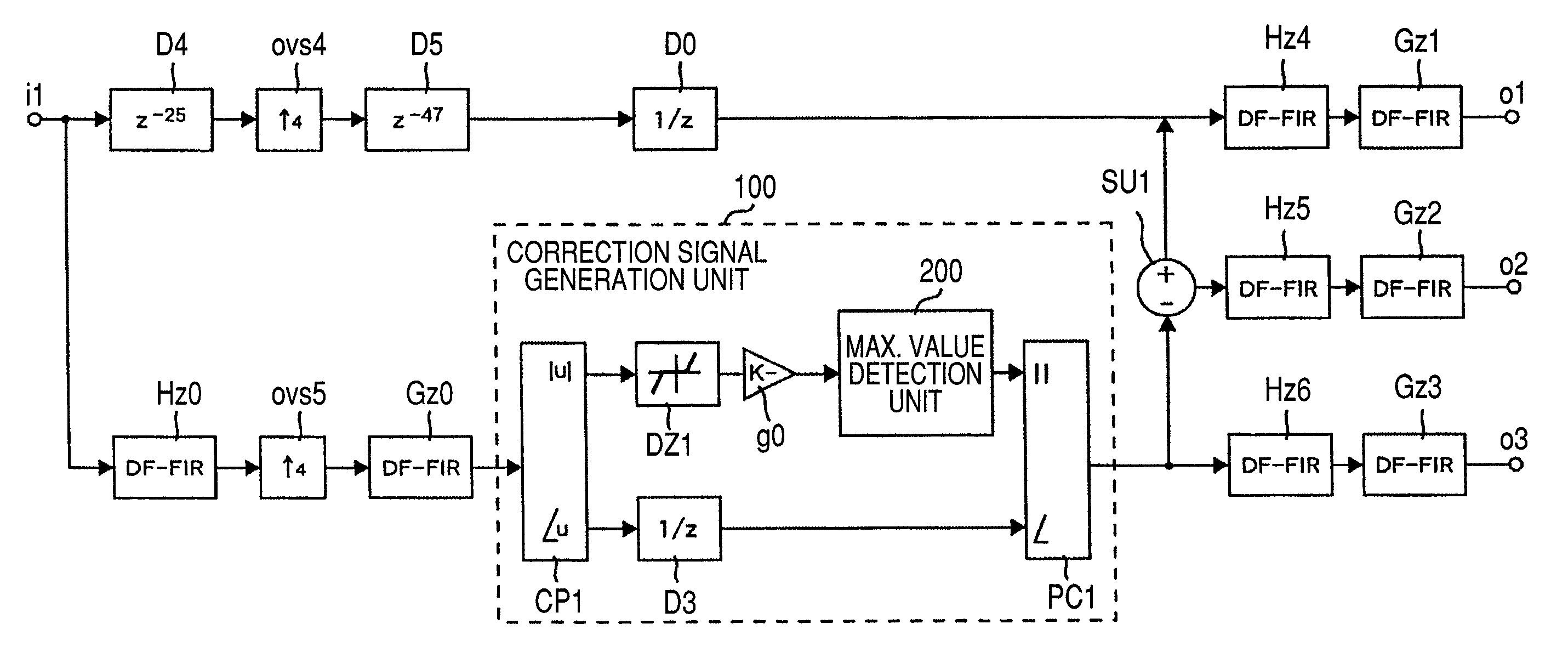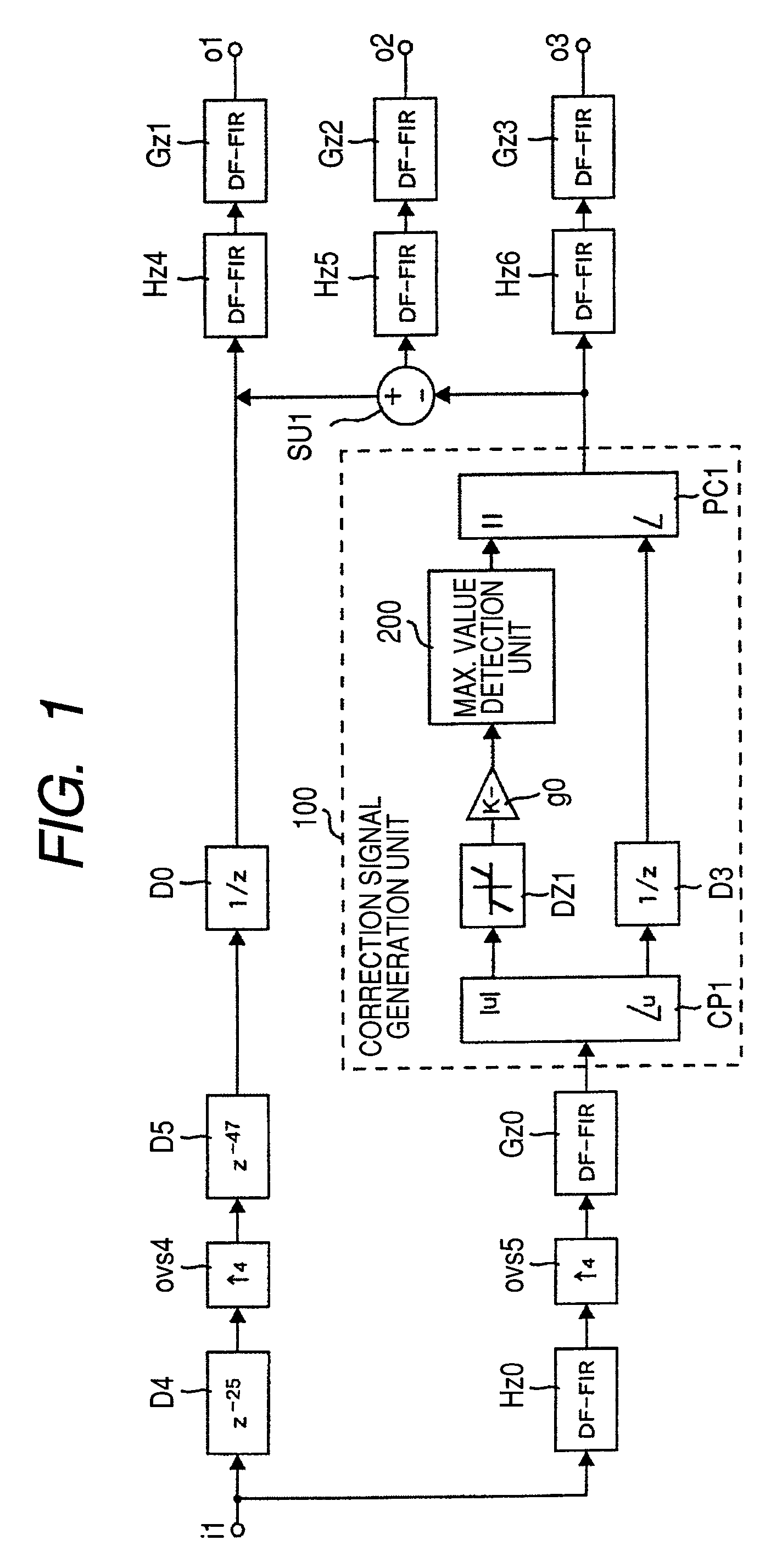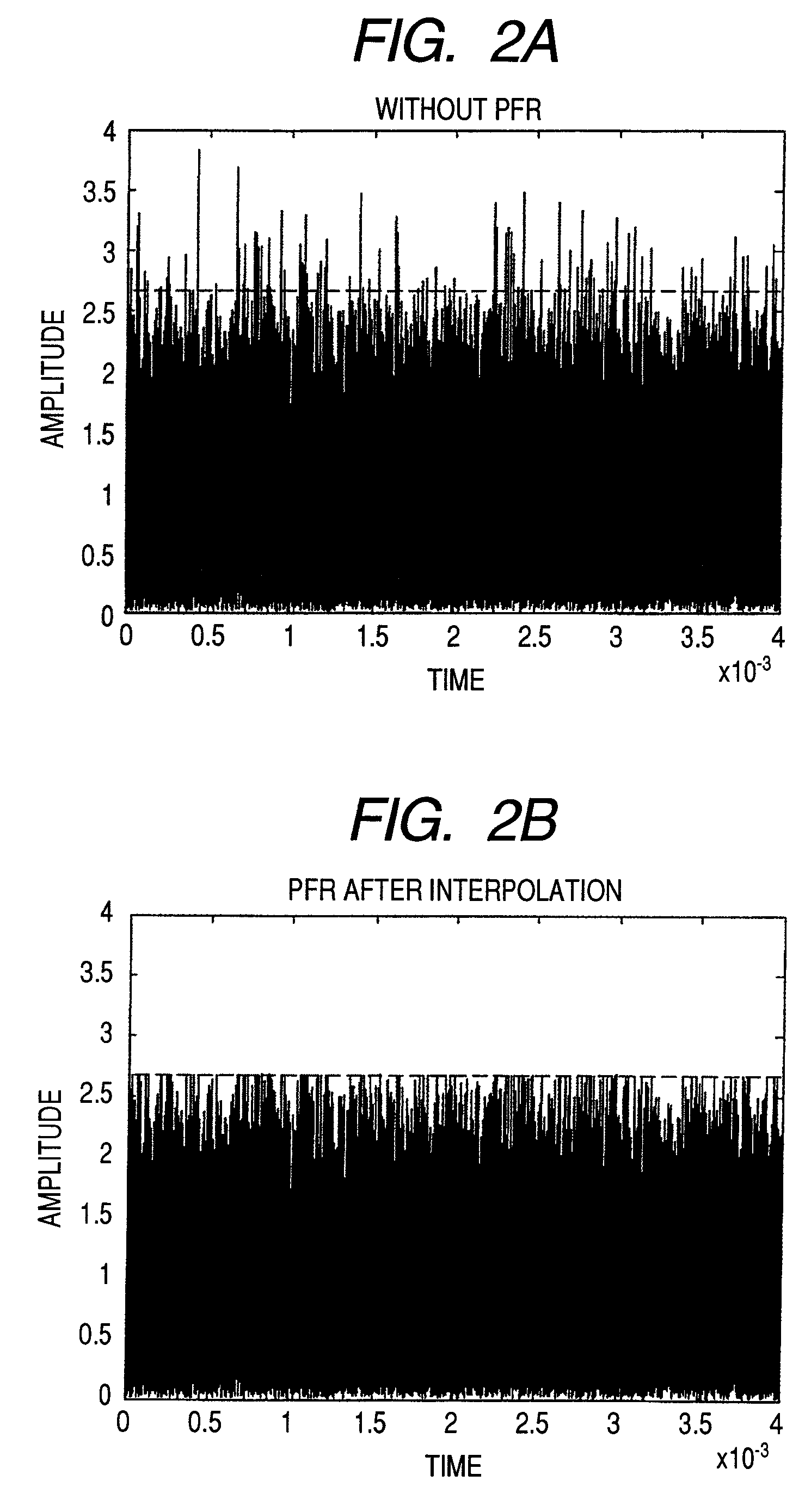Peak factor reduction unit and baseband signal processing device
a signal processing and peak factor technology, applied in the field of peak factor reduction units and baseband signal processing devices, can solve the problems of significant instability in filter phase characteristics and difficult filter design, and achieve the effect of reducing the occurrence of phase distortion in an alias image eliminating analog filter, and not reducing peak factor
- Summary
- Abstract
- Description
- Claims
- Application Information
AI Technical Summary
Benefits of technology
Problems solved by technology
Method used
Image
Examples
first embodiment
[0088]FIG. 1 shows a peak factor reduction unit in a first embodiment of the present invention. In FIG. 1, the same reference numerals will be used for the same components as those in a conventional peak factor reduction unit shown in FIGS. 16 and 20, avoiding redundant description. The configuration of the local maximum value detection unit 200 is the same as that shown in FIG. 16, so that its description will also be omitted here.
[0089]This first embodiment is characterized in that interpolation is completed before peak factor reduction is carried out in a subtraction unit SU1 so as to prevent peak reproduction to be caused by an interpolation filter Gz2. In the peak factor reduction unit in this first embodiment, an over-sampler ovs5 and an interpolation filter Gz0 are disposed between a baseband filter Hz0 and a correction signal generation unit 100 provided in the first path and an interpolation processing is carried out just after the band of an object input signal is limited ...
second embodiment
[0099]FIG. 4 shows a peak factor reduction unit in a second embodiment of the present invention.
[0100]The peak factor reduction unit in this second embodiment has a polyphase structure obtained by carrying out polyphase resolution for the peak factor unit in the first embodiment shown in FIG. 1. The signal response of the unit is equivalent to that in the first embodiment. FIGS. 5 and 7 show configurations of the peak factor reduction unit in intermediate stages, which realize the structures shown in FIGS. 1 through 4.
[0101]In the peak factor reduction unit shown in FIG. 1, the interpolation filter Gz0 is transformed so as to have a polyphase structure as shown in FIG. 24B and the polar-coordinates-to-complex CP1, the dead zone circuit DZ1, and the gain block g0 are disposed before the over-sampler ovs5. As a result, the peak factor reduction unit comes to be configured as shown in FIG. 5. Then, the interpolation filter Gz0 is subjected to polyphase resolution, thereby the filter Gz...
third embodiment
[0109]In the unit configuration shown in FIG. 7, the delay units D61 to D63 connected to the addition unit AD are subjected to noble identical transformation formally and disposed before the over-samplers ovs51 to ovs54. As a result, those delay units D61 to D63 come to have ¼, 2 / 4, and ¾ delays respectively. Actually, it is impossible to create a delay unit having such a fractional delay time. However, if those delay times may be just required to be approximate, a fractional delay FIR filter can replace those delay units.
[0110]The tap coefficient value of the fractional delay FIR filter can be obtained by using a useless detail time D and assume z=exp(jθ), then calculating a coefficient value “cn” so as to satisfy the following expression approximately for each of the three ways k=1, 2, and 3. In the following expression, the right side denotes a frequency response having a desired fractional delay and the left side denotes a frequency response of an approximate filter.
[0111]∑Cne...
PUM
 Login to View More
Login to View More Abstract
Description
Claims
Application Information
 Login to View More
Login to View More - R&D
- Intellectual Property
- Life Sciences
- Materials
- Tech Scout
- Unparalleled Data Quality
- Higher Quality Content
- 60% Fewer Hallucinations
Browse by: Latest US Patents, China's latest patents, Technical Efficacy Thesaurus, Application Domain, Technology Topic, Popular Technical Reports.
© 2025 PatSnap. All rights reserved.Legal|Privacy policy|Modern Slavery Act Transparency Statement|Sitemap|About US| Contact US: help@patsnap.com



